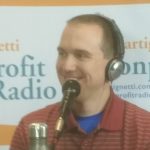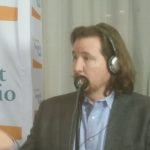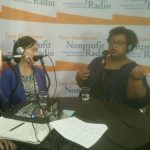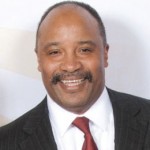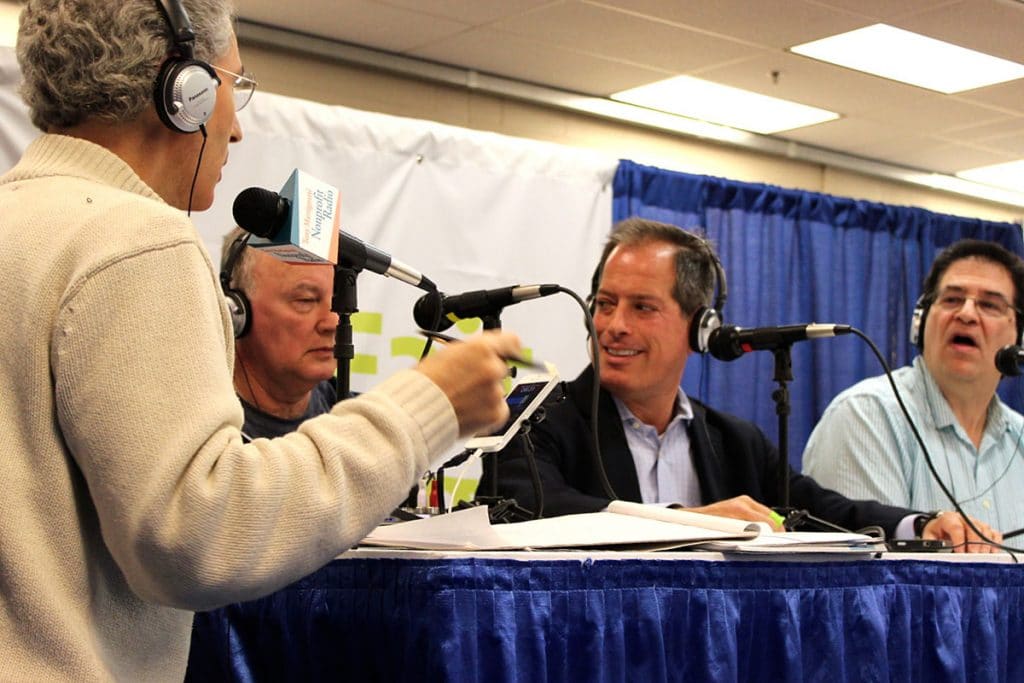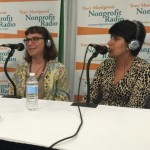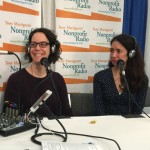I love our sponsors!
Do you want to find more prospects & raise more money? Pursuant is a full-service fundraising agency, leveraging data & technology.
WegnerCPAs. Guiding you. Beyond the numbers.
Credit & debit card processing by telos. Payment processing is now passive revenue for your org.
Fundraising doesn’t have to be hard. Txt2Give makes it easy to receive donations using simple text messages.
Get Nonprofit Radio insider alerts!
Listen Live or Archive:
- On Fridays at 1pm Eastern: Talking Alternative Radio and tune in
- Listen to the October 26, 2018 archived podcast
My Guests:
Ben Byrne & Katherine White: HTTPS
Do you need the security of HTTPS for your website and how easy is it to start implementation? Probably and quite. Our panel is Ben Byrne with Cornershop Creative and Katherine White from Kanopi Studios. (Recorded at #18NTC, the Nonprofit Technology Conference.)
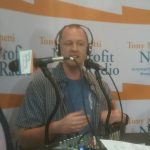
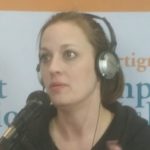
Rachel Clemens: Does Your Website Suppress Giving?
 Rachel Clemens is concerned that your website is holding you back from raising all the money you can. Are you confusing donors? Overloading them? She’s chief marketing officer at Mighty Citizen. (Also recorded at the Nonprofit Technology Conference.) It’s website day!
Rachel Clemens is concerned that your website is holding you back from raising all the money you can. Are you confusing donors? Overloading them? She’s chief marketing officer at Mighty Citizen. (Also recorded at the Nonprofit Technology Conference.) It’s website day!
Top Trends. Sound Advice. Lively Conversation.
Board relations. Fundraising. Volunteer management. Prospect research. Legal compliance. Accounting. Finance. Investments. Donor relations. Public relations. Marketing. Technology. Social media.
Every nonprofit struggles with these issues. Big nonprofits hire experts. The other 95% listen to Tony Martignetti Nonprofit Radio. Trusted experts and leading thinkers join me each week to tackle the tough issues. If you have big dreams but a small budget, you have a home at Tony Martignetti Nonprofit Radio.
Get Nonprofit Radio insider alerts!
Sponsored by:
View Full TranscriptProcessed on: 2018-10-24T15:18:27.166Z
S3 bucket containing transcription results: transcript.results
Link to bucket: s3.console.aws.amazon.com/s3/buckets/transcript.results
Path to JSON: 2018…10…413_tony_martignetti_nonprofit_radio_20181026.mp3.465323320.json
Path to text: transcripts/2018/10/413_tony_martignetti_nonprofit_radio_20181026.txt
Hello and welcome to tony martignetti non-profit radio big non-profit ideas for the other ninety five percent. I’m your aptly named host. Oh, i’m glad you’re with me. I’d be hit with strep. Oh, simba, leah if i had to read that you missed today’s show working virtual we talk through the issues encountered when managing remote staff technological, generational, emotional measurement, recruiting and retaining. Our panel is heather martin from inter faith family and alice hendricks with jackson river. I was recorded at eighteen ntcdinosaur non-profit technology conference and map your data to your audiences. Feed your folks the data they crave. Courtney clarke and david mask arena have identified five audience types and their data needs she’s with forum one and he’s fromthe conrad and hilton foundation that’s also recorded at eighteen. Auntie si, tony, take two who’s on first, we’re sponsored by pursuant full service fund-raising david driven and technology enabled tony dahna slash pursuant capital p well, you see, piela is guiding you beyond the numbers. Wagner, cps dot com bye! Tell us attorney credit card processing into your passive revenue stream. Tony dahna slash tony tell us and by text to give mobile donations made. Easy text npr to four, four, four, nine, nine, nine. Here’s working virtual welcome to tony martignetti non-profit radio coverage of eighteen ntc non-profit technology conference twenty eighteen we’re coming to you from the convention center in new orleans second interview of the second day of our coverage all our ntcdinosaur interviews are sponsored by network for good, easy to use dahna management and fund-raising software for non-profits my guests right now are heather martin, ceo of inter paid family, and alice hendricks, ceo of jackson river. Heather alice, welcome. Thank you. Welcome to non-profit radio. What have you wanted to be here ? How’s ? The conference going for you ladies ? Great. Have you done ? Yeah. Excellent. Okay, great. Next one. That goes good. Superlative. Have you done your session yet ? We did. We were on yesterday morning. Okay. So, it’s all relaxing now ? Right now, we’re just partying. Drinks last night. Exactly. Okay, all right. Your workshop topic is working virtual attracting and managing the best talent. I’m sure we have stats on how many organs non-profits have virtual employees. Or at least what the trends are. It’s it’s obviously growing. It’s really growing wouldn’t be here. And not only in the nonprofit world in the for-profit world as well, and especially in tech. Yeah, okay, absolutely it’s becoming it because of the technology that can enable easily to work from home, your chat technologies, videoconferencing, it’s become a thing and everyone is doing it now on exploring whether it works for their organizations a lot. Let me dive into the word, everyone not to quibble with you at all, but i was thinking generationally, are there fifty and sixty some things that are comfortable working, being virtual ? Not well, maybe we’ll get to whether they’re comfortable having virtual employees. They will get to that. My voice is cracked like i’m fourteen get that, but how about being virtual employees themselves ? Are they comfortable ? I’m over fifty, so include myself in that ? Are we comfortable doing that ? Or, you know, i think it actually depends on the organization and it’s really dependent on the organization making the employees comfortable, and so i’m not sure i don’t know if you have any stats, but i don’t know from an age perspective, there’s a very good question about an older generation being comfortable having virtual employees under the managing them, however, as being the virtual employee, i think it’s all about how the organisation sets it up. Okay. Excellent. All right, so that there’s promised them for those fifteen. Sixty something ? Absolutely. Okay. Okay, let’s, talk about it. Since since we’re skirting around it, how about comfort or discomfort with having employees being virtual when you’re over fifty ? So i again, i i think that there might be an age discrepancy in the comfort, but i also think it’s just personality, and i’m finding that when i talked to a lot of people who are looking to work virtual and they’re asking me, what can i do to go to my manager, my supervisor and quote unquote, sell them on me working virtually my answer to them is find out what the resistance is. There is part of the resistance as we’ve always done it this way i need to see my employees to know that they’re working. And how do you get around that ? Some of the key things that we talked about in our session are setting very clear goals and making sure that those goals are being met. But let’s, go to alice talk to flush out the gold. Gold setting a little. Yeah, i mean, i think that there’s not that much difference in terms of goal setting in terms of accountability for delivery, bols, that you’re supposed to be doing so used that the real issue is communication making sure you have a structure where there’s frequent communication and proof that you’re doing the delivery ble. So you’re measured not on a punch clock style of i get to work at nine. And i leave at five. And therefore i must have worked during that eight hour period you’re measured based on what is the work you were set out to do. And did you actually do that work in the time period ? I said i would do it. So if you’re a project manager are working on a program area you work with your you work with your supervisor on here, the things that i’m going to get done at a particular time. And if that’s not done that’s ah, that that could be a concerned that’s a problem, but that’d be a problem in the non workplace too, but rather than time. It’s mostly based on work product. Okay, okay. So that should apply even if you don’t have any virtual, i think one of the things we found is that working virtually is this, or managing virtually is the same as managing in an office. But you just have to be much more intentional about what you’re doing. Much more intentional about your communication, understanding that you’re not gonna have that water cooler conversation, that someone’s not going over here. Something and understand where you are in a project and b ready to communicate with those people who are not physically in the office. But the management and the psychology of the management is very similar. Okay, it’s, very valuable, you know, and make explicit. Yeah. How about attracting people, teo a virtual or attracting the right talent so that we’re comfortable that they’re gonna work in this work environment ? What do you, what you thought ? Well, there’s. Two thoughts on that that i have one is what one is that your talent pool is the entire country or world, should you see fit ? And there are wonderfully talented people in places that aren’t in the city or town in which your organization is located, and it gives you this ability to recruit from a wide place. And you can also hyre incredibly talented people from who have a wonderful life style. In a less cost of in my organization, we have people who live in a lower cost of living state than washington, d c where were based, and that allows me to provide a living wage and for my employees in that. But the other thing is just you, when you’re recruiting, you have to be very mindful of the interview process, and i think one of the things we talked about in our session was helping people figure out who these folks, how well they’ll respond to working virtually how do you do that in an interview ? Yeah, who’s best with that, heather so so some of the things that that we recommend, some of the things that we recommend is number one, we use technology as a tool to enhance communication in a virtual environment. So sometimes you’re using video comp, renting just for a regular meeting, and you’re talking through instant messenger and there’s other ways you’re using technology. So in the interview process, i always recommend that people use the technology that you’re going to require those employees to be using during their job if they can’t do an interview on skype or zoom or appearance and it’s very uncomfortable, it’s not to say that that might not be a good employee for you, but you have to be aware that there might need to be some training or development on that tool for them and no going. Into that is important when you’re hiring that person, and if you see generally a discomfort with technology that’s a pretty big red flag, or or or a red flag that you might need to overcome or that person’s not right for the position, and then the other question is some positions just don’t lend themselves to working virtually, and you have to be aware of that when you’re hiring also what are from ? Well, one of the easiest ones that we look at it if you’re an office manager and you’re managing the physical office days, it’s really difficult to be virtual when you need thio notice that there’s a crack in the ceiling where the vendor needs toe, you know, deliver something and be their way. We don’t have a tool for measuring the coffee level. Zack remotely happen. And now there’s an app for that you can probably it’s time for a break pursuing they’re e book is fast non-profit growth stealing from the start ups. They want you to see this because they’ve taken the secrets from the fastest growing startups and applied those to your non-profit it’s free as all the pursuant resource is, are you accustomed to that ? Come on, it doesn’t even bear saying it’s on the listener landing page that’s at do you know where tony dahna slash pursuant capital p for please now back to working virtual or any others that stand out to you ? I think it depends on the industry and what the job you’re doing. If you’re someone who does intake or you have to be there to welcome people into the office, you need someone physically there. There may be hybrids where sometimes people could work in the office and sometimes people could work from home. And i think thinking this through before you moved to a virtual environment or virtual job for that specific role is ki you can’t just say, ok, tomorrow we’re just gonna go virtual zoho alice, how do you how do you create this environment ? Gonna be hospitable ? Toe virtual ? I mean it’s all about culture. You have to create a culture where everyone is communicating well with each other, where people know what the expectation is on response times of communication has got to start at the top. It has to start a willingness that you absolutely to accommodate virtual employees. Okay, so it starts there and how does that how does the ceo trickling down ? You adhere to it. So rather than walking from my office into someone else’s office and telling them what i think they should know that maybe two other people who aren’t physically, they’re also need to know i will do that on a slack channel, for example. So i’ll use an instant messenger chat program, and i’ll put them all on the channel and talk to them all together at once, even though you were the mark, even if that’s the situation. Yeah, because it requires amount of discipline because you don’t want to leave people out. The interstitial conversation that happens at the water cooler can also be done virtually and that’s pretty important, too. Okay. All right. We’re going to get the tools you mentioned. Slack, slack channel. Is that that it’s ? All okay, okay. A chat. It’s. Simple chance a chance. A chance for you. You’re over my head, but i’m trainable. Alt-right i could be a virtual employees trust way. Mind of some technology challenges there, but we could get there. I’ll be there immediately. Got the radio stuff ? Yeah. I’m very good at that. I mean, i got knobs and everything in front of buttons and all. I don’t know what they do. Okay, what else ? Uh, anything else about creating the environment, making inhospitable ? I think some of the things that seem or some of the other things are making sure that your remote employees have the tools, whether it’s, the technology or even a monitor to go along with that laptop that you’ve given them because some some people who go into a new job, they’re given a laptop, they say work from home and it’s not as easy as just is your home office conducive and being able to help them think through what are the things that they need to set up in a virtual environment to make them successful and effective at what they’re doing. We talked about it a little bit about security and knowing what the security measures are. You can’t go into a coffee shop and work from your computer. Number one. Are you on the y fire you on the public wifi ? Are you on a virtual private network ? Are you using your hot spot ? You’ve to go the bathroom and your computer’s sitting in starbucks do you leave it there and ask the person next youto watch your computer while you go to i mean, we set policies around these things, especially in organizations that have a lot of regulations on data and accessibility for their information. These are things you have to think about when you’re creating a virtual environment. Okay ? It could be hip, baby what’s the credit card p c m p c i b c i okay, what do you do when you’re at starbucks alone ? You’re on you’re on a vpn virtual private network ? Yeah, you have to go the bathroom. You gotta close up. You use the diaper changing table in and you pull it down in the restroom and put your laptop on that. Take care of your business. Okay ? It’s ? Very. You know, i love the ditty gritty. This are listen, i mean, we’re all about real life here. Way need detail. You need clear policies around policies that people sign and everyone is very well aware of what the security policies, our protection use of technology. You said the company’s versus your pride, your personal technology home versus away from home. Okay, all right. Help me out here. Getting else what else belongs all this ? What else belongs in our policy ? Well, so there’s, we’re talking about there’s communication policies. How ? I mean, one of the things that we found when we first started having more virtual employees. We started as an in office, evan was in the office, and as we grew into different communities, we had employees in different cities and states than our headquarters were located in and things like when i sent an email, i just need you to acknowledge that the email resent if you’re in the office and i send you an e mail and you haven’t responded, i could walk into your office and say, hey, you get my e mail even if you’re not ready to respond to it. I know you’ve gotten it, and by five o’clock that day, i’ll get an answer when someone’s virtual and you send an e mail, you have no idea if it got lost, did it go into their spam and you have to get some kind of communication with one quick got it. So we said a communication policy that says if i asked you something or requested something, you send an email back saying, i got it, and i’ll get back to you by wednesday period the end it’s all set, and so that that you need to be very much more aware of those types of things and other community way have communication policies that go along with that. Okay, alice, you want teo or policy statement ? I mean, the security, i think, is the most important, you know, the email security, the hacking potentials. You know what happens also, when someone is let go, the lockout procedures, they have access to all of your systems, and they’re, you know, in north dakota somewhere to coffee shop, you have to shut down all of their access to things. So all of that needs to be planned at the level in the company. What are you going to do and how you handling staff with remote devices ? Can we do this if we don’t have a dedicated staff person ? And we don’t have a dedicated staff person ? Yes, face-to-face so the family says the answer is yes, okay, because are you know, we’re small and midsize non-profits in this audience, listeners. So you you on board someone with technology when they leave, you do the same thing on lee with a virtual person, you don’t physically have them there, and so you have to do the same thing you would do if someone was in the office, but make sure you couldn’t do it while they’re not physically there. How did they get your computer back to you ? Do they fedex it to you ? Are you going to go pick it up somewhere if they’re not there ? And so just those types of things need to be thought through, okay ? No. Excellent. I love the policy statement details because this is stuff you have to think through, and then alice to your point, has to be activated, implemented on from the top absolutely can’t just have a policy and ignore it. You know, if if it’s the ceo hyre it’s a sea level person whose whose distant you know, they too have to say, i got your e mail and i’ll get back to you by wednesday, everybody has to play by the same rules. There shouldn’t be exceptions or any accommodations or anything else. Yeah. Okay, um, how about let’s talk about some of the needs that your remote staff has we’ve been talking about managing the office ? What what special needs to the people ? But we only see a couple of times a year that’s a great question, okay ? I mean, i think they way it took that long, they need community, they need a partner, they need a buddy, they need to know that they’re not all alone. I’m so frequent meetings daily standup calls on dh heather’s organization native oppcoll standup called well, it’s a it’s, a phrase for a daily time when you just spend fifteen minutes sort of roll going around the company’s saying who’s doing what that day or our a team, if you’re working on a project together, you know everyone’s together on either a video chat or a conference call, or it could even be during us dahna slack channel or a skype group or a google hangout, or any type of technology that people can come together for a period of time. The more frequent that happens, the more connected they feel, and there is an issue of feeling lonely, it’s not that you’re just going off on your back room and typing all day long on your own, you need to be part of a community and part of a team. And the technology helps enable that. And heather’s organization there’s you do ? What is it a buddy ? So anyone who is new who comes on board there’s a couple things we do one is, no matter what level you’re at, you come to boston for a couple days, toe on board. You actually see physical people that’s probably essential. It’s, really ? It was one of like he learnings when i started working virtually is to know that there’s a physical person and a physical space or just seeing meeting someone face-to-face gives you much more of a connection to them immediately. The other thing we do is when we hire people we kind of give them we give them a partner. So we hyre associate director her in l a and we put them with the associate director in atlanta. This is not a mentor. This is not a supervisor. This is someone you can ask the dumb questions too. Like, how do i get my expenses paid ? Or i’m sure they told me this during orientation, but i don’t know what. To do about x, y and z and just having that person that you know you can go to is critical, especially when you’re by yourself in an office or in your home, and you’re trying to go up the learning curve of starting a new job. Okay ? All right ? What else ? Uh, anything else to be a empathetic to our remote employees again, this is a typical management. I would say this you should be doing this any time is just everyone’s intent is good. Assume that is good and there’s a good intent all all the time. That could be that that that’s going to have implications for chatting any female ? No, you can’t you’ll never hear the well, not never, but most of the communications you’re not going to hear the inflection in the person you don’t see the sometimes you don’t see the physical, you don’t see the physical, you don’t get the inflection, and so before you jump into anything or someone sent and i get this all the time and sends me an email and says i need blank, well, that could be taken in so many different ways. Are you demanding something from me did ice not get you something there’s so much in just those three words ? And so my first thing is tio okay, they have good intentions. Let me follow-up you need blank by when ? What is this for ? Get mohr information, they’re not now. They could be like you haven’t done something, i need it now and could be screaming it could be screaming at you with the default is the default is not do that and what we do actually, as we have everyone’s created communications charter that says how they like to be interacted with. And so i understand if you are one of these people who sends very short emails, i also have the flipside where someone sends me seven paragraph emails to describe one thing. And so if i understand how you interact, i could read that email with that understanding, not teo immediately assume that you’re yelling at me in the e mails. Excellent. Okay, very valuable. Are anything else ? Anything else to be supportive again ? Empathetic to the remote employees if we covered it, recovered it ? But i want to make sure we’re the only other thing i can think of is definitely getting together at least once a year with the whole team culture building wants that, yeah, it’s tough, it’s, tough in a non-profit environment where you’ve got a very tight budget, but we have prioritized and all in person meeting in boston, so we’ve got staff in california, in chicago, in atlanta and philadelphia. We make sure that we try in our budgeting process to bring everyone to boston for two days during the summer, not only for good brainstorming and thinking and strategy conversations, but also so they can connect with each other and have that community and build that in person conversation and feel comfortable with each other, and you feel like once a year is sufficient, you know, if i had the budget to do it more, i want a little longer, but all of that, yes. And so you have to take it for one of the that the tools that we talk about is the airplane. I mean, yes, it’s expensive, but it’s a really helpful tool to really get past some of the boundaries that are put up when you don’t actually physically meet in person. Alice, do you have a virtual employees also ? Jackson river, thirty thirty. Thirty. Revoting entire organization is ritual. Oh, my god. Okay, where’s, the is there a physical office ? There is a physical office with three people in washington d c yeah, but so we all behave as if were virtual. And there are many days that i don’t go into the office so in it. So you know, it saves a lot of money and transportation costs. It stays dry cleaning bills for everyone. It saves child care expenses. If you know it’s a very great way to have a lifestyle. Because yu yu have that flexibility, there’s also downsides to it. There are days that i wake up in the morning at six a, m and check email and all the sudden it’s too. And i haven’t eaten breakfast yet. And then i’m until six at night. So you know it’s a the same type of work-life integration needs to happen in a virtual environment as well as a physical office space. You know, you need to know how to take a break. You mentioned saving childcare expenses. So so the the remote employee it needs to be understood that the remote employee may not be immediately accessible right for a quick, you know, for for a last minute way gotta talk right now. So i think it’s about have something going on that is going to hold him up for ten or fifteen way try and make sure that people have adequate coverage to do their job during the day, the hours that they need to work. So we have a lot of employees that are at thirty hours a week because they want to spend more time with their families. Um, older children can be met at the bus stop and take care of themselves for a few hours in the afternoon, but the expectations of performance are still there. You know, we’re pretty high street standards of that, you know, we don’t want you to be distracted from your work. He managed the west coast versus east coast. Well, what is the west coast people have to do ? The westfield people have to start at six a m local time. I think a lot of people do different policies on that. Our policy is that you work for the day that work the business day in the time zone in which you live. So it’s, sometimes hard if we’re dealing with europe and the west coast at at the same time because the time zones i don’t overlap is, well, every boy’s in europe, we don’t have employees in your body to have clients in europe. So it’s ah it’s a situation where we have to manage that, but there are organizations that have west coast people working east coast, ours you have that way don’t have explicit policy that you work those hours, but we ask people how early on the west coast, how early would you be willing to have a meeting ? So we will not set meetings with some people ? Some people are early morning people and they would rather work from seven to three rather than nine to five, and so we’ll work with your schedule individually and so we so there are some meetings i will have on the west coast is seven o’clock in the morning, but that’s due to that person willing to do that, we have a few minutes left still let’s talk about some of the tech tech tools back-up that was i gotta ask you about slack. But what ? Black dot com how ? Do we find it or what you do for us ? Blackbaud comets, how you find it, you know, it’s it’s equivalent to skype or there’s google chat any type of chat software where everyone can log into and then there’s you can make groups in them. So the term for a group in slack is called a channel. And in our organization we have a channel for one of the channels is named lunch and if you’re going to be away for twenty minutes are going to lunch. We just take we just like everyone who’s in the company on that channel and say, hey, stepping away for a bit, i’ll be back in half an hour so we are all know it’s almost a cz though you would see me walk out the door, you know, and i instead of walking out the door i’m just telling that channel what’s happening there’s channels for each project also. So slack is a good one. Scott argast black is already a verb. Just like someone you’d like someone it’s a verbal. You skype someone you trust someone. Do you remember a well, instant messenger ? That that was a one man was that you could use that well, i was. But okay, so slack for for chatting. A quick, quick chat about document sharing is simple google docks or something better. It’s a simple a school back and microsoft has a great year. We have this product microsoft’s one dr sharepoint microsoft suite has has a document sharing software. Ah, cloud based saving system skype is now skype for businesses and integrated with it. And so we’re using that in the office and then there’s there’s a ton of independent ones out there. And it’s, whether it’s, videoconferencing or it’s document sharing or it’s chatting there’s a ton out there. And i think it could be overwhelming. And for us it was evaluating what was best for our organisation and what our upper management was able. Teo use we talked about this before is modeling the behavior you want from your staff and so getting upper management on board was key. So one of our project management software we use a sauna, and we’ve tried three or four of them and our ceo like hassan, and so if she was going to use a sauna, we’re all going to use this on you and so i think that’s really important. It’s got to be easy to use and work for your organization. Calenda ring simple is good calendar ring, yet you have any other tools besides google calendar ? We’re using outlooks calendar. Yeah, okay. Microsoft again. Yeah. All right. I think what other categories we need. Teo a video chat video is really important to scrape. A couple couldn’t do one on video with skype you khun duvette dio with google hangouts, but any time you can actually have an opportunity to see someone’s face and most of the calls we try to do as videos on dh, we find that that works really well. River again, the sense of community and if you can’t get together, that’s almost the next best thing and video has come a long way. The technology is more seamless than ever before, and so at least you’re seeing the person you might not get all of the nuance of the physical that that’s in the room. But you can see it in emotion or you can see a reaction to something which is super helpful or their cat walking of the cat we could get a lot of pets walking in front of the camera while people are on video that’s gonna be a lot of fun to talk about cats, but, you know, you have thirty virtual employees. You have fun doing it. I mean, oh, it’s awesome. Oh, it’s completely awesome is i love it. And well, you know, the best thing is that that people have really formed strong relationships with each other, they when you ask them what they like most about working here is they say each other, they say the people i’m here because i have connected relationships with other people on the team and to be able to create a culture where people feel connected to each other in a remote environment is is like, that’s the thing i’m most proud of, anything we’ve ever done, it doesn’t have to do their software product or what we’ve done to impact non-profits is the fact that we’ve had a culture of people that have had a wonderful time working and doing productive, impactful things. Jackson river always had a largest proportion of employees virtual from the beginning, when the beginnings and the culture to start about about it in the family way started as a two and a half person organization in the same way got to probably about eight to ten people in the office. And then our growth took us into different cities and communities. And that’s when we became virtual because of the growth, and so were probably half in the office in boston. And then half of our staff is outside and there’s one or two people in a city by themselves. We’re gonna leave it there. Excellent. Very much. Thank you. Alright. They are heather martin, ceo of interfaith family and alice hendricks, ceo of jackson river. This interview sponsored by network for good, easy to use dahna management and fund-raising software for non-profits. And this is tony martignetti non-profit radio coverage of eighteen ntc ladies. Thank you so much. Thank you. Thank you. Way. We need to take a break. Wagner, cps. Do you need help with your nine ? Ninety or your brooks ? Are your brooks or your books of those books ? And brooks properly managed ? Well, i could help you with the books. Eyes financial oversight in place so that your money isn’t going to fly out the door over the brook talkto wagner, partner, eat huge tomb. I’ve gotten to know him. I trust him. He’ll be honest about whether wagner is able to help you. You know where to go. Wagner, cps dot com now, tony steak too. I was at the lou costello statue in paterson, new jersey. Remember lou costello of abbott and costello and who’s on first. So what’s the connection, i hope, you know what’s on first is you’ve got to know that i mean who’s on first. Now who’s, what’s on second. I don’t know’s on third. I hope you know what i’m talking about. The connection is you gotta have some sense of history because this this comedy routine and the abbott and costello you they were from the forties, and if you want to be really successful, implant giving and you going to be actively talking to planned giving donors, you need to have some sense of history from the forties or fifties and vietnam. My video is that tony martignetti dot com now it’s time to map your data to your audience. Nces, welcome to tony martignetti non-profit radio coverage of eighteen ntcdinosaur the twenty eighteen non-profit technology conference day two we’re kicking off our date to coverage with courtney clarke and david mask arena all of our eighteen ntcdinosaur views are sponsored by network for good, easy to use donor-centric software for non-profits courtney clarke. Hello. Hello to you. Welcome. Let me give you a proper introduction. David, you could say hello. Hello, david. Mastering it from the convent and hilton foundation introduced himself. All right, david happens to be the digital communications manager at the conrad hilton foundation. And courtney clarke is managing director of user experience forum one. Welcome. Good morning. Thanks for having us kicking off. Thanks for kicking off with us. Hey, happy to be here. You’re workshop topic is data and audience connecting to create impact. Okay, let’s, start with you. David. What do you think ? Non-profits aren’t getting quite right in this subject. Like, why do we need this workshop ? To be honest with you, tell you, please beyond yeah, don’t wear really blunt with the arika there’s a lot of data collection that’s happening in the nonprofit sector, but people don’t really do anything with it. There’s like a statistics where it’s like a very, very small percentage of non-profits you do something with data ? And, you know, for example, there’s so many data points that in any day, that non-profit collectibe we have overload, i mean, really was data over there’s like there’s, like this just beautiful dash was like, what do we do with this ? You have to stay close to michael, okay ? All right, so we’re overloaded. So courtney, what we’re trying to do and have you had your workshop yet ? Yes, we had it yesterday, so you’re on the downside. Yeah, this is easy for you. So what you were doing and then ? And what we’re going to do now is trying make sense of data that well don’t feel overloaded. Well, it’s, it’s mostly around communicating data and really being clear about who your audiences are when you’re doing that cause we have identified five different data, sort of consumers or data people who will consume your data, but they all need different amounts of information, different formats. So for example, like a data consumer, this is like an interested person in the public. Maybe they’re a news consumer. They don’t have a lot of domain knowledge always, and they don’t have a lot of data skills, so what, you’re giving them is going to be very different than, say, a policy maker or a date. A producer. Okay, someone who’s more in depth in the details of it already knows, has has a yeah, you’ve identified let’s. Take it from there. We’ve identified five different audiences. Is that right ? That’s ? Different, different types of audiences. Okay, what are what are the five ? We should start there. Yeah. That’s okay, what ? Five ? I’ll start. Okay. The next one. So data consumer two and then three e before there’s a ping pong tournament here. But we’re not. We’re not going out today. Okay, fair enough. So first is i mentioned the data consumer. This is i hate it when people say general public, because here you’re not really targeting everyone in the whole world. So let’s be a little bit more specific news consumers, people who are already interested a little bit. Okay, okay. Like i said, not a lot of dough mean knowledge. Not a lot of data skill. What you’re calling this group the data consumer. So this is the person you’re like scrolling through your news feed you’re looking at your phone. Ahn, do you see an instagram ? Post or something on facebook, or even in the press in the news. And what do you see ? You see an infographic that’s, simple right language that’s easy to understand. The point is very clear. That’s for the data consumer. They don’t have a lot of power, but there are a lot of those people. Okay ? Hey, name another one. The next one is the data actor. So this is who everybody is targeting. This is decision makers, policymakers on dh. These folks may have some domi. Knowledge may have a lot of durney domain knowledge, but they don’t have time. So even if they do have dana skills, the ability to analyze and understand massive amounts of data didn’t have time to do that. They have analysts who are helping them do that sort of thing. But very important people. They have the staff, they have the cloud. They have our policymakers decision. Is that right ? Yeah. Okay. Okay, david, just give us our remaining three. So, of course, to consume someone has to share it. So you got a date ? A promoter. So these were the bloggers he got you get the journalist. The advocacy for folks. This software developers, the entrepreneur. So these people are the ones who are, like projecting that data out there so that the consumer and the actor be able to see that. And then you have the analyst, which is very, very important a lot. You missed this one too. It’s, like now i have all these data is beautifully being shared out being read, who in a way is a domain expert, this staffer that’s going to be able to analyze and help advice, what to do with the data. And then finally, the researcher you got, you know, these air, the phd folks, these are you know, i was talking about like jin ho was their learning officer, that comet and hilton foundation she’s a researcher, and we recently did a site visit nairobi, kenya, for one of our grantees, shopko shining hope for community and they have rich, rich data they’re collecting around there, committing kibera and compare, by the way, is the largest of informal settlement in africa and think about, like, a size of, you know, central park in a compressor that seven thousand people and there’s so much data that they’re collecting about the community and helping them with their health care and, you know, with an education and such and community services in the way when she’s taught dana, she was just, like, drooling all over it. But she’s, like, i want to do something that and she’s such an academic she just wants to, like, basically designed something around it. So these air, like the data modelers is with the academics of phd folks that will help let’s take the data to a new level. Alright, much so our audience is small and midsize. Yeah, non-profit twelve thousand. So we’re talking a lot of people there in small, small and midsize shop. Yeah, they need to identify which of these audiences they’re talking to some some may never be talking to to the researcher, right ? Or the or the data actor. They might not be doing lobbying, so they may not be. So you have to identify which audiences you’re talking to, right ? You guys hear me ? Okay. And your headsets ? Yeah. Yeah. Okay, good. I don’t hear myself too well, but as long as you hear me, ok, you have to identify who you’re talking to you and then okay, so so i guess we’re going to get through now there are different data needs different ways of conversing about data with data to each of these different audience that’s right ? You don’t have that, right ? Yes, we’re mapping needs and method to the five different audiences and the knowledge that they have tio and the time, right ? So i mentioned the policymaker. They may have some expertise. They don’t have time right on time, don’t time like the researcher. Whereas the researchers, like, get out of my way. Just give me the spreadsheet, all query my own database, okay ? And then also in the spirit of being totally honest, so they have to be honest with yourself who you’re going to deliver the data to, like. If it’s your board, it’s your board and it’s. Okay, you know, and some people are like, oh, this is only for one very specific orders and that’s. Good, you know, because they’re being very, very honest with yourself. Okay, very good. So let’s, start with the ones that are most likely for a small and midsize not to be talking. So certainly data consumer. Yeah. That’s your nose. Your nose could be your donors. I know you’re not calling your donor’s, maybe even just board members. Okay ? Data actor. Maybe it could be any decision maker that could be your board as well. It could be. It could be your boss. It could be somebody who is influencing budgets influencing programming. This is the person who has the power to make a change. So it’s therein you figure out which ones were going teo so they’re they’re in data promoter. That could be a journalist. Yes. Right. So that’s potential. The analyst remind me. What’s what’s the likelihood of a small mid size shot talking to the analyst sometimes yeah, for smaller medium non-profit portable. Forget it. Yeah, yeah. Bonem altum but scale that xero scales up now we’re not going right. We’re not going treatable, but let’s, just talk about it, okay ? I think what i think what’s different, though, for smaller midsize non-profits is that the people listening may be the ones doing the analysis themselves. They may not have a supper analyst. Okay. Yeah, and many came from currently hilton foundations. They get smaller foundation. And a lot of us were multiple hats. So someone might be liberta both, but yet, yet they still move every important. Okay ? They’re all in. Okay ? Yeah. All right. So what do we do for the data consumer ? How do we have a retailer to that audience ? Yeah. They’re a couple of key things. That’s. What we need. Yeah. So one is use plain language when you’re communicating to them, they may not know who you are, what you do, why it matters. Plain language is really key. Sometimes people get a little too marketing me. Sometimes they get a little too research. E you need to be able to say what you want to say in a really simple visual with some simple language like you’re talking to your friends. Yeah, we were at a dinner party. You’ve got ten seconds to explain what this is and what matter-ness schooling for. Graphic. That will do it for you or something like that, right ? Or even just like a data point point. Okay, we got to take a break. Tell us, for pete’s sake, think of the companies you can refer and start asking them that’s the first step. Well, actually, the first step is watching the video. Then you start referring the companies and talking. To them, you’ve heard the testimonials from the charity’s. You’ve heard the testimony from the companies. It’s. Time to get that long stream of passive revenue for yourself. Start with the video. That is the first step video. Is that tony dot, m a slash tony tello’s. Now back to courtney clarke and david mask arena from eighteen. Ntc what’s. The summary. Yeah, and a couple of that with something you mentioned visually could be motion. Could be a visual visualization of data. It could be a story. It could be a video that couples with the data because just it’s. Just a lot more impact for when you, when you when you pair it, but okay, let’s, start to make sense. Your data consumer is gonna be a lot more interesting story then your analyst or your research eggs ? Absolutely. And during our session yesterday, there are people in the audience who talked. We talked a lot about how we paired data with stories because the narrative makes it so much more riel, it elevates the people that are actually being affected by this data. So there were some great stories about that. Okay, okay. Back-up let’s, go to the well, anything else about the consumer ? I mean, this is this is this is probably our largest constituency. Yeah, so i think the other thing is to be clear about what action you want them to take because your data should support that action don’t just and and actually that came up from an audience member yesterday who said people weren’t being moved by the data and so that’s why they started pairing it with stories and once somebody gets hooked and they feel those heartstrings being cold or they feel that passion rise that’s when you gotta capitalize and be really clear what the action is, whether it’s donating, volunteering on asking for more information yeah, signing up for the male daughter, give us your new gives your email yeah, and think about the safety step back a little bit this like you have to identify goal, like whether you’re trying to accomplish with this data set and it would help you help you with to decide like what to share in how to share that welfare that’s always important place to start gold. What was the purpose of this, exactly what we’re trying to move people and then we try to move people to do and then be clear about exactly called. Okay ? That’s, right ? And the goal is the hardest part. Frankly, knowing the goal is the hardest part. It’s on so simple, but it’s like that ask why five times you got to get to the real root of why you’re doing this. All right ? We’re talking about our actor actor. Okay, refresh my recollection, who’s, this decision makers, policymakers, people who are going to make the change that you want, sir. Yeah. Okay. Okay. How do we talk to these people that data. So the format is briefings sometimes it’s in the form of a press release. They need, like, think about a policy maker who has a staff and maybe they have to vote on a bill or make a decision. The staff member is the one who’s calling non-profits calling agencies and saying what’s happening in my district around this topic. So being able to slice your data by topic and location is really valuable to these folks and getting this summary out and again the action. What ? Why does this matter and their actions going to be different than the consumer ? Usually you’re looking for a decision, a vote, something exactly what you want to say more about the actual, i think something that’s adjustable something that if you could package it for them, like staying here, the key takeaways from this a swell, you know, think of this, like, you know, you know, working the communications team. And, you know, we provide press kits for people. And if you could provided that, you know, so so they could easily digest and help, um, guide them through the decision making process, i think will be the key. Okay. Yeah. Okay. And i guess also keeping in mind you you may not be talking to the principal. Yeah, right, right. It could be a staff staff, something. Usually it is so it’s. Gotta be it’s. Gotta be so your your urine for always going through someone to the decision maker way don’t love that. Right ? Twice removed, twice removed from your there once removed from your data. Yeah, it happens. I mean, that’s what ? Any communication, though. Anytime you’re putting something out, somebody could take it. Andi at their own commentary around it. That’s what ? The data promoter that’s a that’s a benefit in a risk, right ? Because they could date a promoter could be multiplying. Your audience is your audience, but they could be putting their own message. They could be manipulating the data in a way that may not be true to it. But, you know, were you everybody has had, you know, that journalist didn’t get the quote quite right ? Yeah, you are taking over simplification exactly. If the press often has to do to make something interesting to readers, you know, put in a headline. Yeah, yeah, and the promoter should also think about, like, segmenting looking if they could do, like, a more targeted in a way, like, if they know specifically that they’re going to try to communicate. Teo, i think they’ll be the key as well. And you get to know your trusted data promoters, right ? You know, the journalists or the bloggers are the advocates who you trust, who you align with the messaging around. So identifying those folks or maybe you don’t know them and you do a little research and you find out who you are, where, wes, you need to know within your sector who the influencers are. Absolutely yeah, i get a little bit of research. Goes a long way. Yeah. Back-up how do you feel about the standard press release ? Since we’re talking about the audience of promoters, we’ll be sending it to either of you have, ah, opinion on press releases. Are they outdated there ? Some school of thought that press release is dead. But it’s it’s still being used is using it. You’re still using journalists say they ignore them. Yeah, andi, and honestly goes back to relationship building, you know, like in communications, that our primary key is build relationships with with journalists. So when our press release passes through their deaths, they’d be able to, like sick. Oh, let me take a look at this and then dig deeper into the story for us. Just a little more let’s. Talk about building a relationship with a journalist before you want them. Tio, take some action for you to write about you in to quote you on that day’s breaking news. Yeah. How do we build that relationship when we don’t have a need ? But, you know, we want to be in front of the person. Yeah. I mean, honestly, like i just it’s a good old fashioned relation building, you know, you have called them, reach out them email and called, you know, like you have no agenda, but i mean, this marketplace exactly you often cover way. Have coffee, exactly. What a concept. I mean, like, i’m also part of communications network conference, just another communications based non-profit unconference and a lot of journalists attend that and it’s a great opportunity, this plate, this form and ten is a another great form to meet people like i would add to that you need to be you need to understand that audience and you need to be curious about they have their own set of requirements that they’re trying to meet. They’ve got an editorial calendar there. Boss has told them what topics to focus on. They’re looking for. They need they need to youto help them connect the dots. So maybe don’t start with the ask, understand what they’ve been working on for the last month. What stories ? What topics ? And then being able to which, which, by the way, does not mean ask them what have you been writing me out ? It means doing your research before you do the outreach, so that you know, so that, you know, you’ve shown that, you know, you show that you’ve taken the time to know what their beat is exactly not just asking you what do you write about lately ? Well, it’s in the paper buy-in there dubai it’s on it’s, on the site, in the research, and then and then what are you working on next or what’s ? The story you’ve been dying to write that you haven’t had the chance to there’s always a good answer for that and there’s a great conversation starter, especially like imagine putting yourself in their shoes, you know, like someone just roundly wants to have coffee with you, but you have no idea who they are didn’t even do any sort of research like and, you know, you have very, very busy schedule, and you have multiple crowdster headlines like we just need to remember they’re people tio don’t waste their time any more than you would waste. Teo spend the time with a potential donor. Exactly ask them what you’re worth. You’re not gonna ask them things that you want to know already write, write, write what is it about our work that he loves ? Well. I’ve been giving to you for fifteen years, i think it’s, probably in my e-giving history, you know, don’t waste people’s time exactly, but but it is important to build relationships with exactly these influences. Okay, i would add to that there channels are largely on social media. If you talk to any journalists, they spend all their time on twitter. So if your twitter gene is not great it’s time it’s time. Learn what hashtags there using. Follow those channels, see who they’re following. See what they’re talking about. A great way to do research on also how to start to engage early on, even if it’s just observing. Okay. Okay. Very good. Okay, so i want you. I want to spend more time on that. I want to check my mike. Want to make sure that everything is good here. Okay, a little insecure about the way i sound. I don’t know. I sound you don’t sound good to me, it’s. Not okay to you, though, right ? It’s ? A little soft. Like i can hear myself. Really ? I could hear myself, teo. You don’t hear me. According to richard it’s. Not as clear. Yeah, in-kind okay. And give. Myself a lot more volume. All right, now, my too loud. Ok, it’s. Good. Allright. Thank you. Time for our last break. Hoexter give quote, i compared a bunch of companies in my search for it hoexter donate company and text to give is the best hands down. They have b been beyond helpful. I can’t imagine anyone doing this better exclamation mark end quote that’s lauren bouchard from global commission partners in clermont, florida. Satisfied ? She is with text to give you will be, too for info text npr to four, four, four, nine nine, nine. We’ve got several more minutes, and here they are for map your data to your audiences. Let’s, continue the analysts. Right. Data analyst. Refresh our recollection. David who is this ? So this is the data expert this’s. The staffer that’s or consultant ? That would help be a read data. Okay, and analyze it for you, like they be in a foundation. Now. I like the way i sound better. Okay ? Like they’d be a foundation program, officer. It could be. Is that an example or no, i’m not necessarily. I mean, it could be a learning officer for the foundation meeting the one. Who’s like analyzing all the learning and data sets. Ok, he could be a data manager, you know, within an organization. Where would you ? Where would you put a program, officer out of foundation ? Someone who’s evaluating your grant proposal. Where ? Where would they fit in these audience ? Most like, i mean, it’s a little bit of both between the consumer and the actor, to be honest with you, because they’re both a decision maker. So they’re going to read the data and they’re also going to get this just like, okay, this is how my program is going and here’s how i’m going to act upon it. And here’s how i’m gonna adjust my strategy with it. Okay ? Yeah. All right. So, let’s, go back to the analyst. How do we, uh, david ? You keep going. What do we do with this ? How do we talk to the analyst with our data ? Go. No. Gosh, just give it all to them. Honestly, rod, they love him. They loved it. They love spreadsheets there. Said if they see a string of numbers, imagine like matrix type of thing. They’re like oh, my gosh, this is habit. Okay, okay. Yeah. It’s that simple ? Well, they have, i would add that they usually have the domain a knowledge. Do you think of a policy maker ? They haven’t education expert on staff or they may have an expert in international relations it’s that person who knows the domain quite well and feels comfortable digging through the data and furthermore to add to that, too is like if he providing which your goals and what your strategy is for and what they’re trying to provide the otherwise they’d be able to help you got guide you through the breeding process say more about that ? Yeah, what shit a little bit, so think of him like, you know, like, if i’m like, if i am se the heather communications in the foundation and i’m like, i’m gonna talk to a data analyst we’re trying to accomplish x can you help me read through this day that what types of data sets can leave first collect and what’s up days says comey can provide so they’ll be able to accomplish that goal, then they were able to narrow down because otherwise they could they could. You stand in any sort of ways, but if you provide some sort of direction or gold. They’re able to, like filter things a little bit better for you. Okay, yeah, very good. Really good. And our last left audiences the researcher buy-in courtney yeah, the researchers are get out of my way and give me this red sheet they the like they may scan through your infographic, your visualization, your query tool. But really, they’re going to build their own query tool. They’re goingto grab that they’re the ones who are in sequel making pivot table like they’re doing all of it. Okay, we have jargon jail on twenty sequel i think people will know, but i’m going to pivot table. Alright, excel itself. Okay, sorry, i’m taking a data analytics class so i’m learning this stuff, so i’m excited to be able to talk about it just dropping, dropping top, but, yeah, i imagine you’ve got an excel table that is so large that you can’t open it x l can’t open it. That is what these researchers are are working in and they’re very comfortable working in and they’re the ones who may even be collecting data as well as analyze sing it for themselves, so think of it like a like a layer deeper than unless they got analysts who may rely also some visualizations. And of course, like a deep amount of pressure. But these guys are like they’re just like neck or forehead, deep of like numbers and data, and they want to do everything themselves. Yeah, yeah. So one one important thing here we have worked on a number of data projects and for non-profits or foundations any group who wants to attract many of these audiences, the keeping with researchers is you have, like, the get data page or sometimes we’ll put it in the footer and it’s, like, just download the excel spreadsheet because i keep saying it, but you got to get out of their way. Just give them what they want, okay ? Okay. We have, like, another minute and a half or so do you have tools ? And, uh, in your description, you mentioned choosing the right data tools. Any tools we can introduce briefly that you like, i mean, to be honest and this is like, tio, you get off being out of keeping it will be really hash tag riel here, please place if you’re old website have google and alex installed. I mean, you’d be surprised how many webs are out there and smashing non-profits believe that twenty nine, twenty nine percent of them are using do or not. Okay, okay did not have google and licks and police bare minimum do that and they said, like have i think the fun ? Nothing is like have goals, you know, before it was like before you venture into the day the world ? Yeah, there is there’s a great study that every action did called the state of non-profit data. And you can it’s from twenty sixteen. But it’s a great read a page i recommended. Okay, we’re gonna leave it with we’ll leave it there without recommendation. All right, all right. They’re courtney clarke, managing director of user experience at forum one. And david mask arena digital communications manager at the conrad hilton foundation. Courtney and david. Thank you so much. Thank you so much. Pleasure. This interview along with all of our eighteen ntcdinosaur views sponsored by network for good, easy to use dahna management and fund-raising software for non-profits. Thank you for being with non-profit radios coverage of eighteen ntc next week the buy-in bitches getting buy-in from your leadership. If you missed any part of today’s show, i beseech you, find it on tony martignetti dot com, responsive by pursuing toe online tools for small and midsize non-profits data driven and technology enabled. Tony dahna slash pursuant capital p well, you see, piela is guiding you beyond the numbers. Bradunas cps dot com by tello’s, credit card payment processing, your passive revenue stream. Durney dahna slash tony, tell us and by text to give mobile donations made easy text npr, to four, four, four, nine, nine, nine a. Creative producers. Claire meyerhoff, sam leave lorts is the line producer shows social media is by susan chavez. Mark silverman is our web guy, and this music is by scott stein. You need me next week for non-profit radio. Big non-profit ideas for the other ninety five percent. Go out and be great. You’re listening to the talking, alternate network, waiting to get you thinking. Dahna good. You’re listening to the talking alternative net. Are you stuck in a rut ? Negative thoughts, feelings and conversations got you down ? Hi, i’m nor in sumpter, potentially ater tune in every tuesday at nine to ten p m eastern time and listen for new ideas on my show. Yawned potential. Live life your way on talk radio, leo dot n y c geever. Hey, all you crazy listeners looking to boost your business, why not advertise on talking alternative with very reasonable rates ? Interested simply email at info at talking alternative dot com. Do you like comic books and movie howbout, tv and pop culture ? Then you’ve come to the right place. Hi, i’m michael gulch, a host of secrets of the sire, joined every week by my co host, hassan lord of the radio godwin. Together, we have, over fifteen years experience creating graphic novels, screenplays and more. Join us as we bring you the inside scoop on the pop culture universe you love to talk about wednesday nights eight p, m eastern, talk radio, dot and wives. Dahna did you know you’ve been playing poker your whole life, even if you’ve never played a hand of cards ? Hi, i’m ellen lake and author of polka woman and host of the new show. Poker divas on the show. I talk about poker strategy helps you win in business, life and love. Tune in live every thursday, one p, m to two p m eastern standard time on talk radio dot n y c you’re listening to talking alternative network at www dot talking alternative dot com, now broadcasting twenty four hours a day. Are you a conscious co creator ? Are you on a quest to raise your vibration and your consciousness ? Um, sam liebowitz, your conscious consultant, and on my show, that conscious consultant, our awakening humanity, we will touch upon all these topics and more. Listen, live at our new time on thursdays at twelve noon eastern time. That’s, the conscious consultant, our awakening humanity, thursday’s twelve, noon on talk radio. Dot buy-in. Dafs you’re listening to the talking alternative network. Yeah. Buy-in.





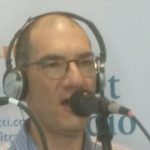

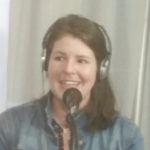
 It drives Amy Sample Ward bananas. Let’s talk through her issues and preventative measures. She’s our social media contributor and the CEO of
It drives Amy Sample Ward bananas. Let’s talk through her issues and preventative measures. She’s our social media contributor and the CEO of 

